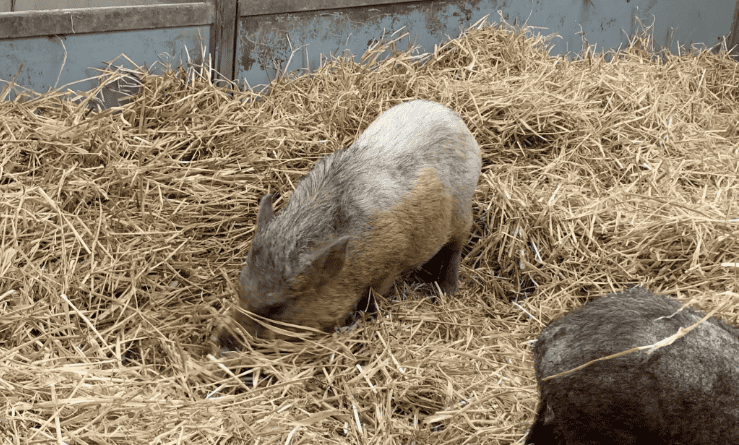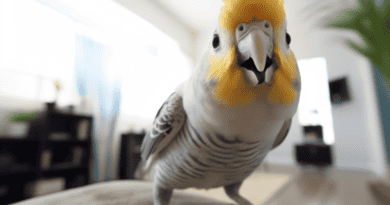Do Micro Pigs Grow to Full Size?
Have you ever thought of adopting a pet pig, but you are not sure whether or not this is a good idea? Well, you’ve come to the right place. In this article, I will be listing all of the necessary information to help you make an informed decision in the future.
Some of the things that I will include in this article micro pigs grow to full size is a mini pig a type of breed, and what is the full-grown size of a mini pig, just to name a few as there will be other topics that will be discussed in this article as well so stick till the end of the article to learn more. Without delaying any more time, let’s jump right into the article now.
Do Micro Pigs Grow to Full Size?
There are many breeds of pigs nowadays that are labelled and sold as “mini pigs,” which include the Juliana, Pot-bellied, and Kunekune pigs. However, even though they seem to be quite small at first, keep in mind that even if you raise the smallest breed of pig in your home, these pigs will not remain small in size for a prolonged time. The reason is that these pigs tend to grow bigger as time passes, so you should prepare a proper place to care for your pigs later on when they grow bigger.
Is a Mini Pig a Breed?
Is there a mini pig breed? The short answer is no. There is absolutely no actual breed that is known as a mini or teacup breed. However, small-sized pigs do exist, but getting yourself a small pig comes with some serious consequences. Most pigs that are smaller in size tend to have a shorter duration of life, and you will most likely need to spend some money to cover these pigs’ medical needs.
The demands and popularity of mini pigs have grown significantly over the past few years, but do mini pigs exist naturally? For those that don’t know it yet, the term “mini pigs” is used by breeders to describe any breed of pigs that are small in size. This term can often be used interchangeably with other terms such as pocket pigs, teacup pigs, and micro pigs.
Keep in mind that they are not a distinct breed, but they are a product of multiple varieties of breeds that have been selectively bred to get the end result that tends to be smaller in terms of size. No one has ever been able to constantly raise a healthy small-statured pig. Most of the time, these types of pigs would have an extremely restrictive diet.
In the inbreeding process, the breeders would breed one baby pig that they know has some sort of genetic problem, which is not good for any animals. Most of the time, these mini pigs would most likely have respiratory complications, leading to death. Another technique used by breeders to get a mini pig is underfeeding them, which would cause their internal organs to grow bigger while their bones grow weaker. As a result, these mini pigs will most likely have bone frailty and deformities.
What is the Mini Pig Full-Grown Size?
Based on the data published by the American Mini Pig Association, a normal miniature pig can weigh somewhere between 50 to 150 pounds, and its height may reach up to 50 cm when it’s fully grown. This means that these pigs can gain a lot of weight over time and grow quite tall like a border collie. Most pigs that weigh less than 350 pounds would be considered to be a type of miniature pig.
In a case where you have a standard farm-breed pig as your teacup pig, then you should expect your pig to grow much heavier and taller up to three times its initial height. The weight of a fully grown female matured pig can reach more than 700 pounds, while the weight of a matured male pig can reach up to 1000 pounds. Hence, you should always be careful with whatever it is that you choose to adopt as it will never be possible for it to fit properly in a teacup.
Apart from that, you should also bear in mind that just like humans, each pig grows at different rates. The reason is that it depends on the type of food that it consumes on a daily basis. Even if you try to feed two different pigs the same fresh food that you gave to each of them, they will most likely have a different growth rate and possess different sizes.
Literally, no one will be able to give you the exact data about how big, tall or heavy your pet pig will get in the future. There are a lot of factors that you will need to consider to even get the proper estimation of the general health of your pet pigs. Please keep in mind that most pigs tend to grow bigger in just one to two years. Hence, if you need pigs that are small, then you don’t need mini pigs as guinea pigs would be more suitable for you.
How Do I Provide a Proper Place For It to Grow?
Pigs are a type of animal that is extremely curious about their surrounding environments, and they do enjoy a place where they can move around to explore and root around using their snouts. Certain dog toys are not suitable for pigs as they would usually either destroy or consume them, which may be dangerous for their health. Other types of objects that you may have in your house may be targeted objects by pigs as well.
If they don’t have the opportunity to perform standard pig activities, they will eventually become bored. When this happens, they will start to do something to get rid of this boredom. You will find them tearing your couches apart, rooting through the cupboards, and knocking the tables in your house over. An ideal place to raise a pig would be an outdoor environment where they are free to explore the world by themselves.
When you’re raising your pigs outside, be sure to provide a safe shelter for them to live in as they can’t tolerate extremely low and high levels of temperature. Most people tend not to know the fact that pigs don’t produce any sweat. Apart from that, they are also known to be susceptible to parasites and insect bites, and just like us, they can also get sunburnt if they’re exposed too long under the sun.
The best place for pigs to live in is a shallow mud pit as it provides a lot of benefits to pigs. One of the benefits of a mud pit is that it provides a medium for these pigs to cool their body off, especially during sunny days. A shallow mud pit also helps your pigs to repel any type of insect as it will automatically stick into the mud if it lands on it, and it acts as a skin conditioner and sunscreen for your pigs’ skin.
How Do I Feed My Micro Pigs?
Pigs can be categorized as a type of omnivore animal that requires a healthy balance of minerals, vitamins, fibre, carbohydrates, and protein. Most feed stores would usually sell mini pig feed that provides the right nutritional balance for your pigs. However, this type of feed can be quite difficult to find nowadays. On top of that, the type of feed that a pet pig needs is not the same as the one that a farm pig used to eat.
Most mini pigs enjoy a wide variety of fresh fruits and vegetables in their daily diet. They may also eat certain human foods, leftovers, and scraps for as long as they haven’t gone bad or toxic to mini pigs. Just like the digestive system of a human, there is a certain type of food that could cause some digestive problems for mini pigs.
Even if you provide fresh food to your mini pigs, you can’t just simply feed them human leftovers as it is not an ideal choice of food for your pigs. The reason is that human foods are not guaranteed to provide all of the essential nutrients that a normal mini pig would need. The daily diet of a mini pig should comprise leafy greens and grains as well as an additional 12 per cent protein.
You may give some fresh fruits to your mini pigs as a treat to shape good behaviour at an early stage. Since mini pigs are omnivores, they would most likely try to eat everything that comes their way. This can be very dangerous for them, so you will have two choices. Either you keep an eye on them to prevent them from eating anything that’s toxic for them, or you can keep them in a secure place to ensure their health and safety.
This article was written by our friends over at minipigpen.com


